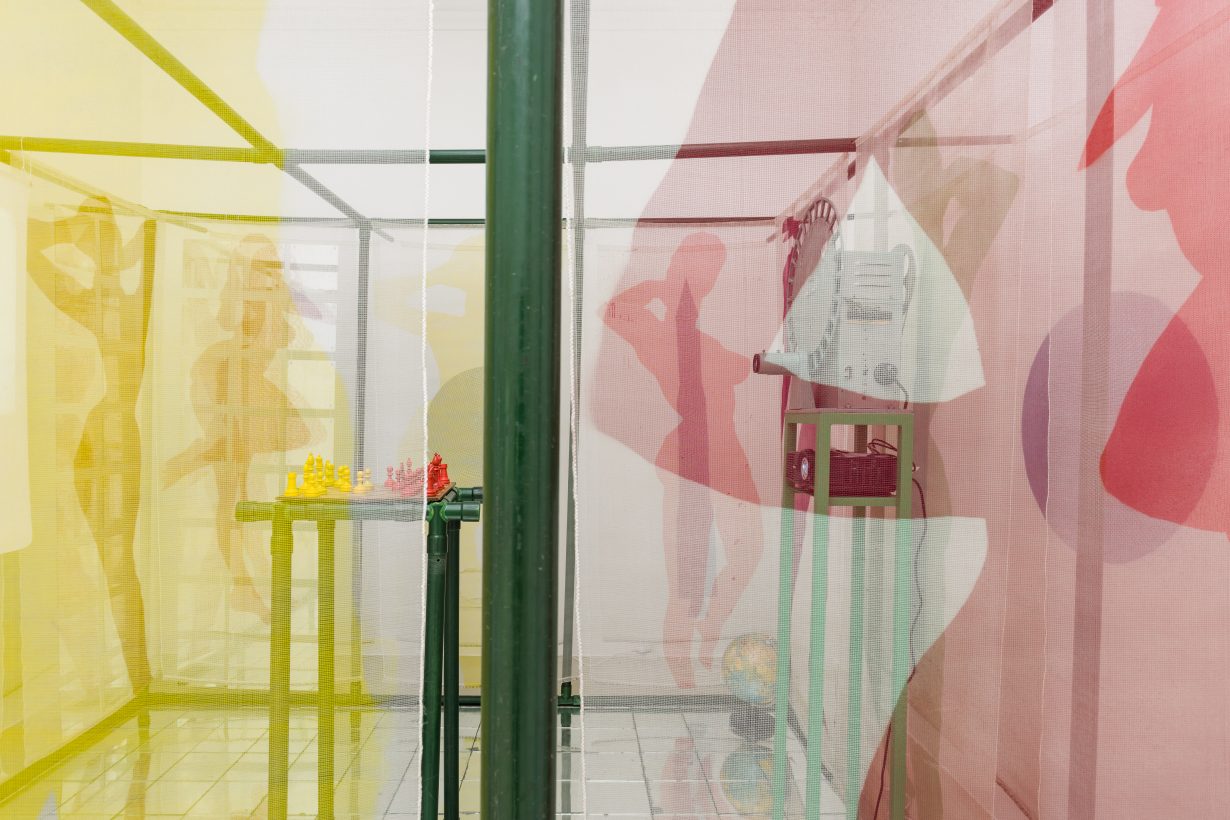A retrospective at Halle für Kunst Steiermark breathes new life into the conceptualist’s oeuvre
Such is the scale and profundity of Stano Filko’s oeuvre that ‘a retrospective’ can only mean presenting a section or cross-section of his art. The Slovakian conceptualist, who died in 2015 in his late seventies, was less interested in what art history made of his work than what he made of it; as a self-mythologiser, he’s less reminiscent of other artists than he is of maverick reggae producer Lee ‘Scratch’ Perry. Filko organised his art according to the holistic ‘System SF’ (System Stano Filko), which, in turn, was subject to strict colour, chakra, scientific and art-historical, temporal and multidimensional models. From the 1990s onwards, in his studio in the north of Bratislava, he continuously revised his art on the basis of these criteria; but it was not always properly stored and archived. The possibility of viewing the works on the scale of this present show, then, is tantamount to an event, and curator Sandro Droschl uses both levels of the institution for A Retrospective, and even the roof of the exhibition building and the adjacent park, for a discovery-rich overview.
Three substantial electric ventilators in white, red and blue, Wind (1967/c. 1995), positioned in the entrance area leading towards the main room, literally indicate what the show delivers: a new and accelerated air supply for Filko’s complex, persistently fresh-looking work. The 20-metre-long, horizontally oriented silver tube Clinical Death Tunnel (2010) simultaneously measures, blocks and divides the main room, which is filled to the ceiling with a variety of artworks (pendulums, ladders, cartwheels, balloons, rockets, paintings, etc). The installation of altars from the series The Altar of Contemporaneity (1964) shown in the apse of the house, combines erotic and Catholic motifs in a manner that was doubly polarising at the time and in the socialist location of their creation, as they strengthened suspicions of Westernised deviance. Among further highlights, meanwhile, and serving as sensual and transcendent gateways into Filko’s intermedial universe, are the star-map shooting-range installation Shooting Range – Target Universe (1966–67/2005); the uncanny-feeling Models of Observation Towers (1966–67) – partly coloured metal tools on a mirrored surface in front of a black-and-white photographic view of a row of prefabricated concrete-slab-construction buildings in a district of Bratislava; and The Universal Environment (1966–67). This last, which audiences at the time could enter, is an installation comprising a chessboard, chess pieces and slide projections of then-consumerist images, a Western promise reduced to cars and women. Walking through this made viewers themselves an active living (and observable) part of the work.

On the floor below, we’re able to place what we see above in the context of its creation, revision and previous examination. An archive room, modelled after the artist’s own chaotic, organic studio and with an iPad installed in it, offers us the opportunity to conduct our own research and rummage through seemingly endless documentation, theoretical materials, etc. Here are collages, graphic ephemera, sketches, text works, project plans and drawings (“Every drawing is a project proposal!”, the artist says in a videoed studio visit with Hans Ulrich Obrist and Roman Ondak), which also prove that Filko, his raw idiosyncrasy aside, also always met the graphic demands and fashions of the time.
One room is devoted to another key work, White Space in White Space: neutrally painted – pointedly free from artistic expression – white canvases, placed on the walls and floor of the white cube. First realised in 1973 as a 24-hour collaborative piece in Brno with colleagues Miloš Laky and Ján Zavarský, this artistic absolute zero – only now slowly establishing its full significance for the East European neo-avant-garde – conceptually collapses together canvas, exhibition wall and space, authorship and artistic expression, in an attempt to figure liberation and something like infinity. It’s shown here by means of various set pieces and elements from different versions, relaying its eventful history far better than a detailed reconstruction of one iteration would be able to achieve today. The combined experiences of the monochrome and transcendence that were focused in this work continued to interest Filko after he emigrated to New York in 1982, mostly painting there, and then returned to Bratislava in 1990; he wanted to keep making art until his centenary birthday, in 2037, but also to live on after that. Of course, that didn’t happen, and the idea of a Stano Filko dedicated to idleness must thus necessarily remain hypothetical.
Stano Filko: A Retrospective at Halle für Kunst Steiermark, Graz through 5 June
